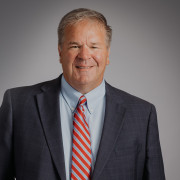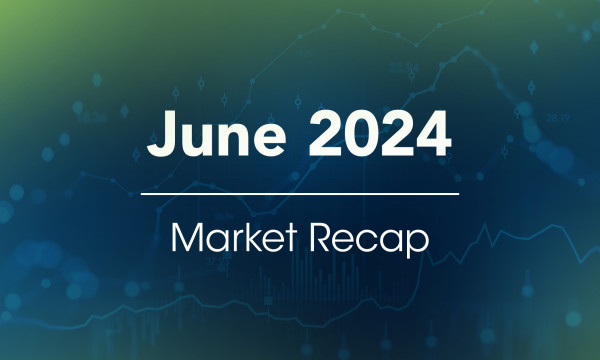Coronavirus & your 401(k) plan
Options for employers and employees

The COVID-19 health crisis is affecting employers and 401(k) plan participants alike. Union Bank & Trust’s Retirement Plan Services team is here to help employers get through this, and explain all the options you have as part of your 401(k) plan. From an employer’s perspective, an economic slowdown may make it difficult, if not impossible, to continue to make employer contributions. From an employee’s perspective, the issue is whether a participant can access his or her 401(k) plan account balance. Let's take a look.
Employer Contributions
A COVID-19 economic slowdown may affect whether an employer can make matching contributions and/or nonelective (i.e., profit sharing) contributions to its 401(k) plan. Before deciding to reduce or suspend contributions, an employer must understand its obligations under the plan, and whether the plan can be amended to reduce or suspend employer contributions.
Discretionary Matching Contributions and Discretionary Nonelective Contributions
If a plan provides for discretionary employer contributions, then the employer can decide whether to make an employer contribution, and if so, the amount. Because these employer contributions are discretionary, the employer typically does not have to amend the plan to reduce or suspend the employer contribution. The employer can simply decide not to make a contribution for the current year.
However, if an employer wants to amend the method of allocating employer contributions to participants (e.g., shift from a permitted disparity allocation formula to a pro rata allocation formula), the employer should contact a qualified advisor to analyze the proposed change in light of the plan’s allocation conditions (e.g., a requirement that participants have to complete 1000 hours of service and/or be employed on the last day of the year to receive an employer contribution).
Although an employer may not be required to make employer contributions, employees often have an expectation that a contribution will be made (based on past employer contribution patterns). Accordingly, the employer might consider notifying employees that this year’s employer contribution will likely be reduced, or not provided at all.
Required Safe Harbor Contributions
A safe harbor 401(k) plan requires the employer to make a safe harbor matching contribution or a safe harbor nonelective contribution. The issue is whether an employer can reduce or suspend the safe harbor contribution mid-year.
An employer can suspend or reduce safe harbor contributions mid-year in the following circumstances:
- Employer is Operating at an Economic Loss. The employer can reduce/suspend the safe harbor contribution if it is operating at an “economic loss.” While it is unclear what is meant by an “economic loss,” presumably it means that a company’s expenses exceed its income for the year to date. See ERISA Outline Book (2019 Ed.) at 11.530.
- Previous Notice of Potential Suspension/Reduction. If the safe harbor notice given before the beginning of the plan year included language, stating the employer may amend the plan mid-year to reduce/suspend safe harbor contributions, and that the reduction/suspension will not apply until at least 30 days after a supplemental notice is provided to eligible employees, then the employer can exercise its right to reduce/suspend the safe harbor contributions mid-year. In this case, the employer does not have to show that it is operating at an economic loss.
The employer must take the following action to reduce/suspend safe harbor contributions:
- Give Supplemental Notice to Eligible Employees. The employer must provide a supplemental notice to all eligible employees, explaining the: (a) consequences of the amendment reducing/suspending the safe harbor contribution; (b) procedures for an employee to change his/her deferral election; and (c) effective date of the amendment.
- Amend the Plan. The employer must amend the plan to provide for the following: (a) the reduction/suspension of the safe harbor contribution; and (b) that the plan will use the current year ADP and ACP testing method, as applicable, for the entire year.
Note: The amendment reducing/suspending the safe harbor contribution cannot be effective until at least 30 days after the above-described supplemental notice is provided to all eligible employees.
The consequences of reducing/suspending safe harbor contributions mid-year are as follows:
- Fund Safe Harbor Contribution through Reduction/Suspension Date. The employer must fund the safe harbor contribution through the date of the amendment that reduced/suspended the safe harbor contribution.
- Plan Loses Top Heavy Exemption. In many cases, a safe harbor plan is exempt from the top heavy minimum contribution requirements. If the safe harbor contribution is reduced/suspended mid-year, then the plan will lose its top heavy exemption.
The following example shows how an employer can reduce/suspend its safe harbor contribution mid-year:
- Employer maintains a basic safe harbor matching contribution plan.
- Before the 2020 plan year, the employer provided a timely safe harbor notice to all eligible employees. The safe harbor notice explained that the plan could be amended mid-year to reduce or suspend safe harbor matching contributions and that the reduction/suspension will not apply until at least 30 days after all eligible employees are provided notice of the reduction/suspension.
- The employer, due to the negative impact of COVID-19, wants to suspend the safe harbor matching contribution, effective May 1, 2020, for the remainder of the 2020 plan year.
- The employer sends a notice, no later than April 1, to all eligible employees, explaining that the safe harbor matching contribution will be suspended as of May 1, 2020. The notice also includes other content as required by the regulations.
- The employer adopts a plan amendment, no later than May 1, 2020, suspending the safe harbor contribution as of May 1, 2020, and providing that current year nondiscrimination testing will apply for the 2020 plan year.
- The employer will fund the safe harbor matching contribution for deferrals made to the plan before May 1, 2020.
Employee Access to Accounts
Similar to employers, the COVID-19 crisis is causing economic troubles for employees. Accordingly, employers may want to think of the following ways a participant could access his/her account balance under the plan.
Plan can Offer Participant Loans
If your plan does not currently offer participant loans, a loan feature can be added to the plan permanently or temporarily. Generally speaking, a participant loan may not exceed the lesser of:
- $50,000; or
- 50% of the participant’s vested account balance.
Participant loans are typically paid through payroll deduction, and the loan cannot exceed five years (unless the loan is a home loan).
The primary issue with loans is that when a participant terminates employment, the loan typically becomes payable in full unless the loan policy provides otherwise. If the participant cannot repay the loan in full, then the outstanding loan balance will be taxed and subject to a 10% early distribution penalty if the participant is under age 59-1/2 (unless an exception applies). The participant, however, can avoid taxation and penalties by rolling the amount of the loan offset amount to an IRA.
The COVID-19 crisis has already prompted many employers to furlough workers rather than terminating them. The issue is what happens to a participant loan when a worker is furloughed. Pursuant to the typical loan policy used by Union Bank clients, a worker who takes an unpaid leave of absence is excused from making loan payments as long as the unpaid leave of absence is one year or less.
When the worker returns to work, the loan still must be paid within five years from the original loan. This is done by reamortizing the loan balance over the remaining loan term, or retaining the current loan payment schedule with a balloon payment.
Plan can Offer In-Service Distributions that are not Hardship Distributions
The plan can be amended to allow participants to receive distributions while they remain employed. These in-service distributions – that are not hardship distributions – can be allowed from one or more of the participant’s accounts (e.g., elective deferral, matching, and/or nonelective profit sharing accounts). However, in-service distributions from an elective deferral account are only permitted if the participant has attained age 59-1/2. In-service distributions from employer contribution accounts can be permitted after a fixed number of years, attainment of any stated age (can be less than 59-1/2), or other stated event.
The problem with this type of amendment is that the in-service distribution becomes a protected benefit that cannot revoked at a later date.
Plan can Offer Hardship Distributions
The plan can be permanently or temporarily amended to allow a participant to receive a hardship distribution. As of the writing of this article, the IRS had not provided any hardship distribution relief directly related to COVID-19. Without such special relief, the following hardship reasons would be available to participants (if the plan allows hardship distributions) to pay:
- Medical expenses for the employee, dependents, or primary beneficiary; or
- Amounts needed to prevent eviction from the employee’s principal residence or foreclosure on the mortgage on that residence.
The maximum amount that can be distributed under the hardship regulations is limited to the amount needed to alleviate the hardship increased by any taxes and penalties reasonably expected to occur as a result of the distribution. Hardship distributions are subject to taxation, and a 10% early distribution, if applicable, like any other non-hardship distribution.
A participant must receive all other available distributions from the plan before receiving a hardship distribution.
Finally, the IRS is expected to issue COVID-19 tax relief relating to plan loans and distributions. Union Bank will keep you updated on these developments as they occur.
If you want to discuss what changes can be made to your retirement plan to alleviate the stresses placed on you and your employees as a result of COVID-19, please contact your Union Bank Relationship Manager.
UPDATE: Most branches have reopened, but we encourage customers to check individual location hours and lobby availability.
Learning Center articles, guides, blogs, podcasts, and videos are for informational purposes only and are not an advertisement for a product or service. The accuracy and completeness is not guaranteed and does not constitute legal or tax advice. Please consult with your own tax, legal, and financial advisors.
|




